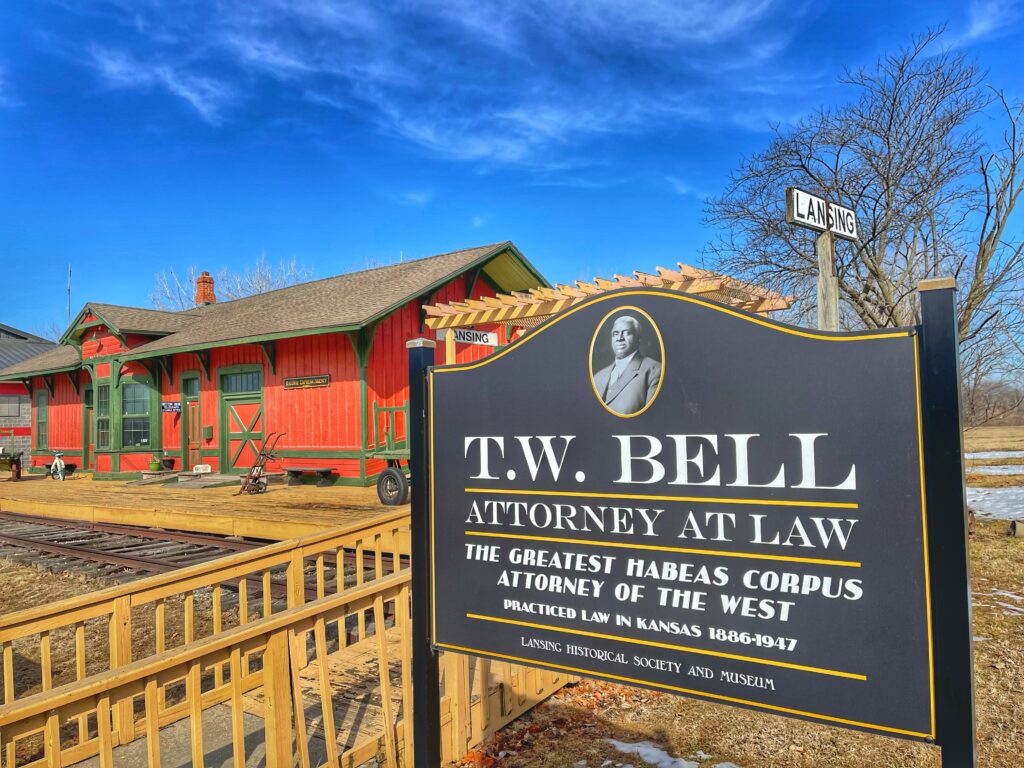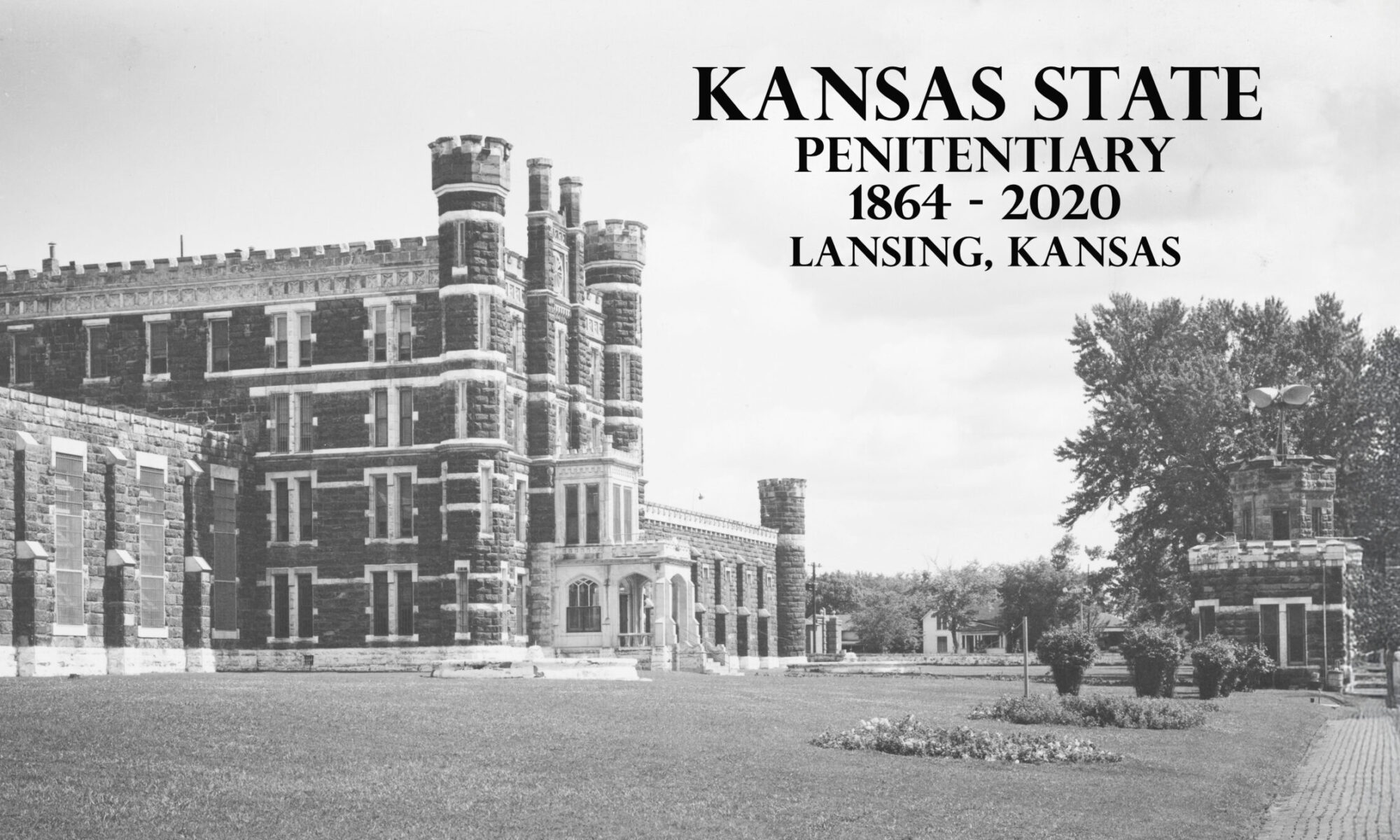
The Lansing Historical Society and Museum recently erected a sign in front of the museum at 115 E. Kansas, Lansing, Ks., recognizing the achievements of local legend T.W. Bell, attorney at law.
“Honorable Turner W. Bell, the greatest Habeas Corpus Lawyer of the West” wrote the Kansas City Son in a news article referring to Bell’s defense of three labor union dynamiters. The title would stick with him throughout his 61-year career, as he would total more than 1,400 habeas corpus cases. He would practice in every court of appeals in the eight states of the judicial districts.
Turner William Bell was born into slavery at Corinth, Mississippi, April 1, 1857, according to his death records. He was the second eldest of 11 children who lived to adulthood.
At the outbreak of the Civil War, Corinth became the focus of both Union and Confederate forces because two major railroads, the Memphis and Charleston Railroad, running east and west, and the Mobile and Ohio Railroad, running north and south, crossed in Corinth’s downtown.
According to Department of Iowa Grand Army of the Republic, Peter Bell (T.W.’s father), was freed after the battle of Corinth and joined the 110th United States Colored Infantry as a private. Records show he was mustered out of the service in 1865. The Bell family then moved to Dallas County, Iowa.
They settled on a farm near Adel, Iowa, where young Turner would attend school in a mostly Quaker populated area. Bell would excel in school, graduating with honors from high school. He would graduate from Drake University with a law degree, becoming the first African-American to be sworn into the Iowa Bar Association.
There are mixed reports as to when Bell joined the Leavenworth County Bar. He first appears in a Leavenworth City directory in 1887 with a law practice listed at 416 Delaware. Numerous newspaper reports refer to Bell being sworn into the Leavenworth County Bar by Judge William C. Hook in 1886.
Over the next few years, Bell would move to different offices throughout downtown Leavenworth. Several of those office buildings are still there today. It was from this secure base that Bell would indulge in his “hobby” of freeing prisoners from state and federal prisons. It is estimated that he freed more than 1,500 people. Today, habeas corpus cases are widely used to restore freedom to those who are imprisoned or in other forms of custody under state or federal institutions.
In 1915 Bell’s offices were located in the prestigious Wulfekuhler Building, along with other attorneys, according to the City Directory of that year. Bell is listed as the only ‘colored’ attorney practicing law in Leavenworth.

Securing the names of the other gentleman is a work in progress.
Bell would join the newly formed Kansas Defense Society in 1918 as legal counsel. The society was an organization instituted for “the purpose of testing the constitutional rights of the race along civil, political and other lines that may be necessary to bring about justice and sentiment in behalf of the race in this country,” The Topeka Plaindealer, 29 Nov., 1918.
The Kansas Defense Society, of which there were eight members from Leavenworth, was formed after the court martial and hangings of 19 soldiers of the 24th Infantry at Fort Sam Houston, Texas December 1917 for their participation in the Houston Riots of 1917. A Military court-martial at Fort Sam Houston, Texas, found 118 enlisted men guilty, 63 of those men were given life sentences at the Federal Penitentiary at Leavenworth. Bell would file a writ of habeas corpus in the United States Supreme Court for the release of those men. In arguing the case, Bell would cite that the order of the court martial was not in accordance with law as set out in the court martial manual and that at the time of the riot, the men were not doing soldier duty for the United States Army and the country was not at war at the time, The Leavenworth Times, May 23, 1920.
It would be through the efforts of Congressman D.R. Anthony, Jr., of Leavenworth and T.W. Bell that the life sentences of these convicted men would be commuted to sentences of ten to 15 years.
Bell married Elizabeth “Lizzie” Patterson in Leavenworth in January 1890, according to marriage license records. As the wife of T.W. Bell, Lizzie was very active in social and political circles. In 1909 she was elected as president of the State Federation of colored women’s club and in 1915 she was a delegate to the Northwestern Federation of States for Colored Women held in Chicago. Her mother Martha would live with the couple at 744 Kickapoo until her death at the age of 100 years in 1924. A story appeared in The Leavenworth Times, July 9, 1920, about Martha. She had walked from her residence at 744 Kickapoo to the voter’s registration office at the Leavenworth County Court House, where she registered herself to vote in the next election. And after resting a bit, she walked back home. The U.S. Senate had just approved the 19th Amendment on June 4, 1919, giving women the right to vote.
Bell would continue to practice law until he was the oldest member of the Leavenworth County Bar at the age of 91. Bell died August 25, 1948.
